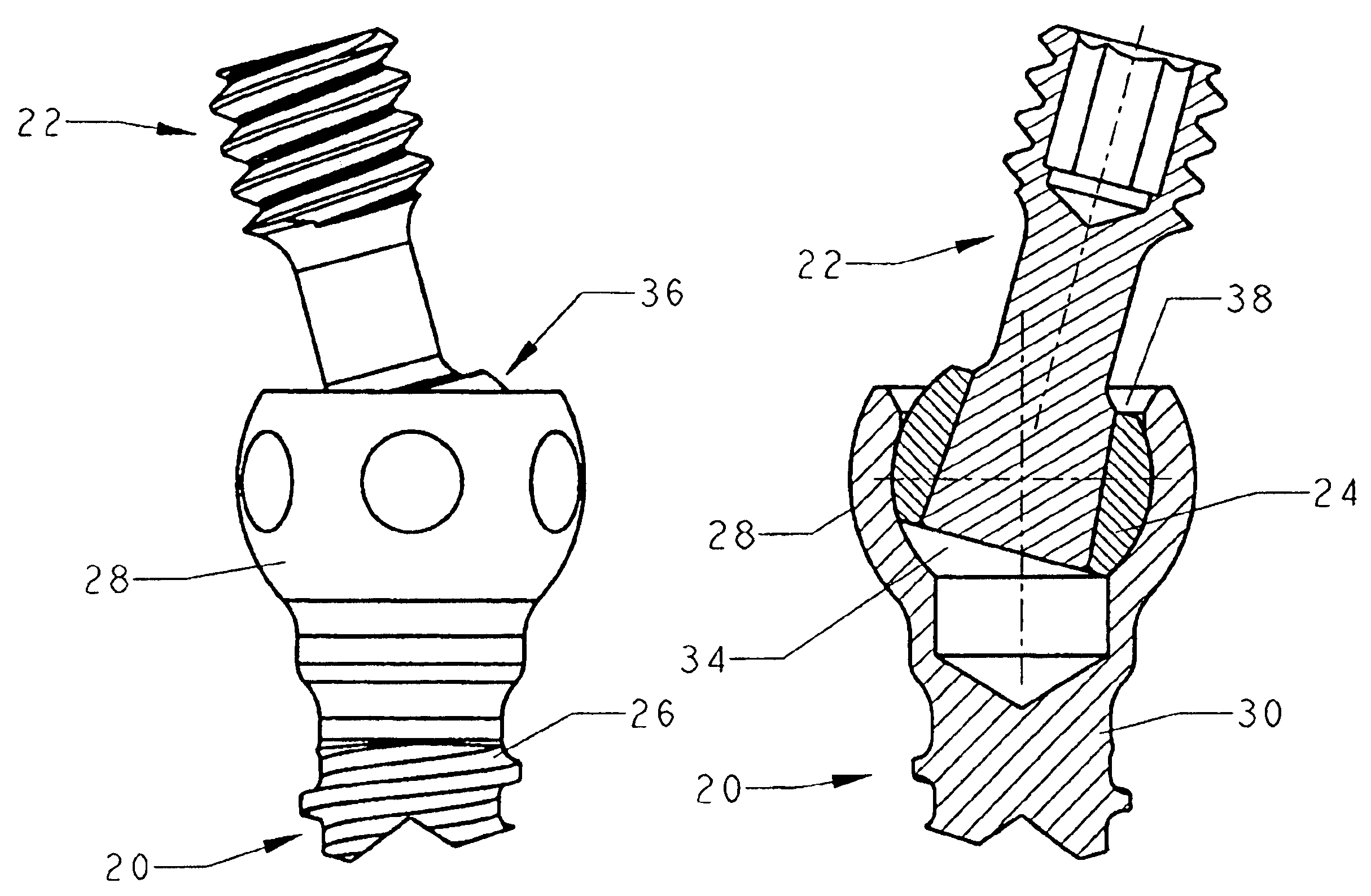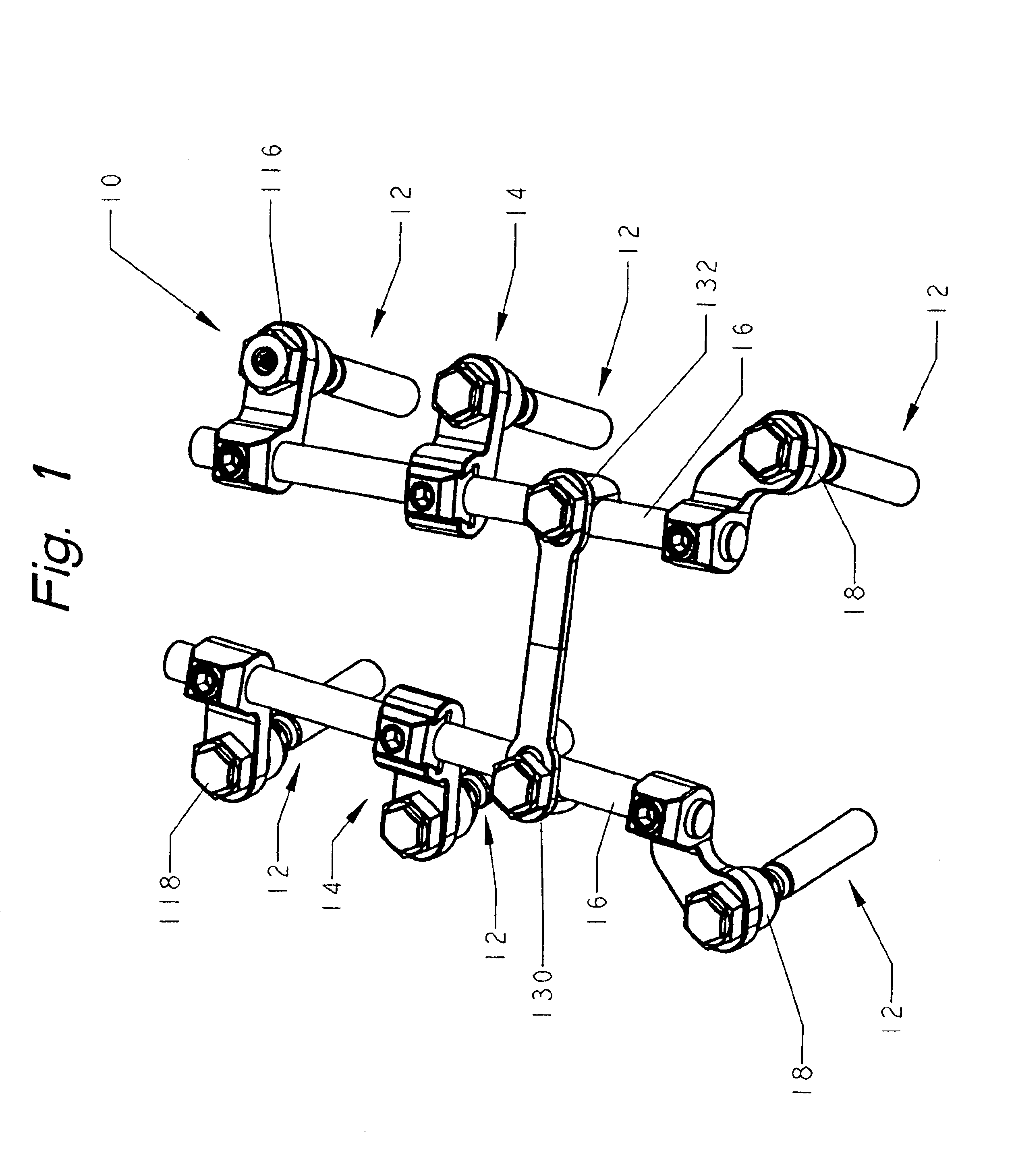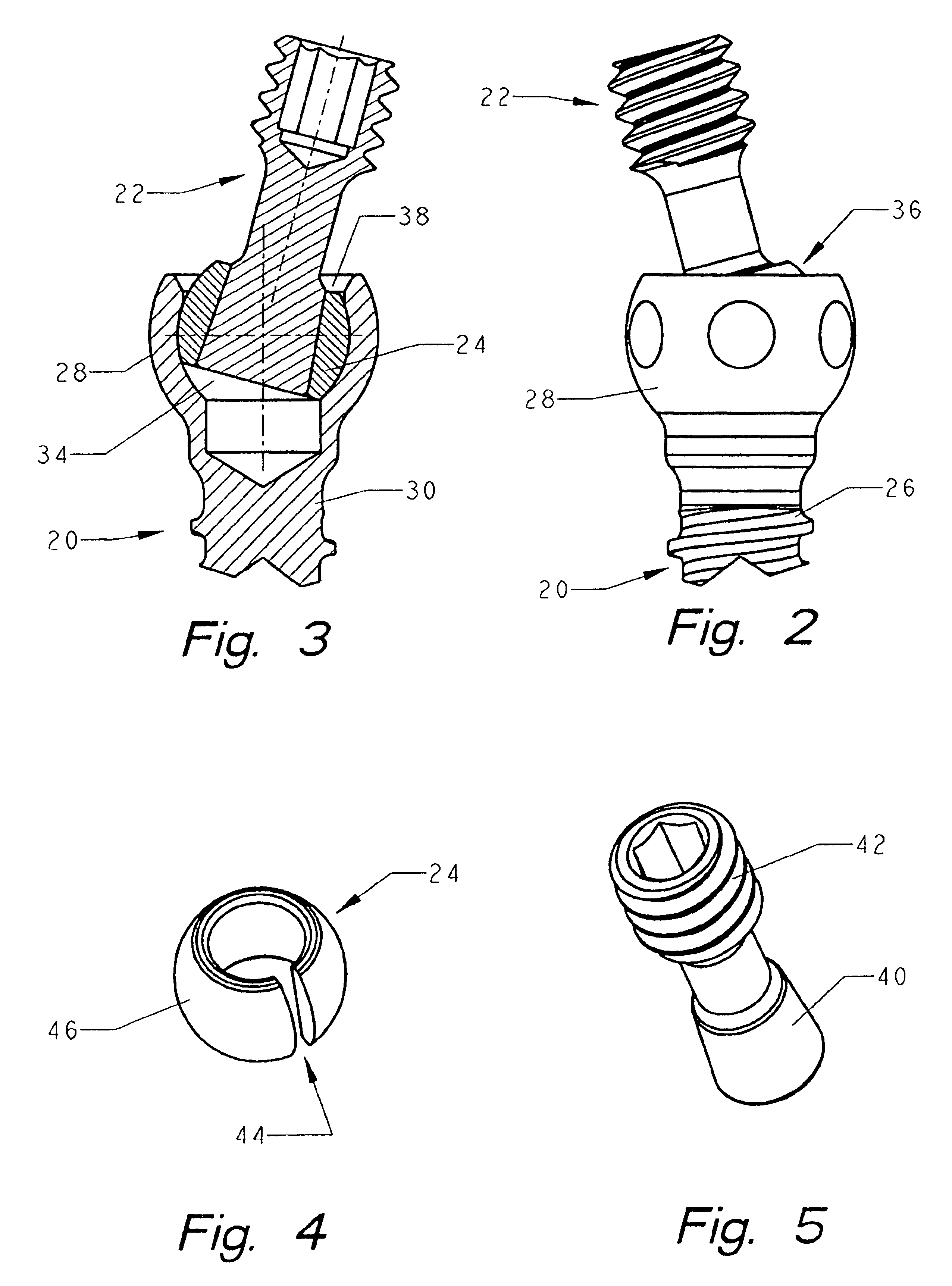Split ring bone screw for a spinal fixation system
a bone screw and split ring technology, applied in the field of spinal implant systems, can solve the problems of limited positioning, undue stress further affecting adjoining bones, and the component design and bone screw design inhibit the application to a particular spinal injury, and achieve the effect of satisfying correction
- Summary
- Abstract
- Description
- Claims
- Application Information
AI Technical Summary
Benefits of technology
Problems solved by technology
Method used
Image
Examples
Embodiment Construction
[0050]It is to be understood that while a certain form of the invention is illustrated, it is not to be limited to the specific form or arrangement of parts herein described and shown. It will be apparent to those skilled in the art that various changes may be made without departing from the scope of the invention and the invention is not to be considered limited to what is shown in the drawings and described in the specification.
[0051]Now with reference to FIG. 1, the spinal fixation system 10 of the present invention is shown. By way of overview, the Fixation System 10 includes a collection of bone-engaging anchoring assemblies 12 that are joined via connectors 14,14′ to stabilizing rods 16, 16′. The specifics of the spinal fixation system 10 will now be discussed in more detail.
[0052]With additional reference to FIG. 2, one of the included anchoring assemblies 12 is shown in an assembled state. Each anchoring assembly 12 also includes a pedicle screw 20, a toggle bolt 22, and a s...
PUM
 Login to View More
Login to View More Abstract
Description
Claims
Application Information
 Login to View More
Login to View More - R&D
- Intellectual Property
- Life Sciences
- Materials
- Tech Scout
- Unparalleled Data Quality
- Higher Quality Content
- 60% Fewer Hallucinations
Browse by: Latest US Patents, China's latest patents, Technical Efficacy Thesaurus, Application Domain, Technology Topic, Popular Technical Reports.
© 2025 PatSnap. All rights reserved.Legal|Privacy policy|Modern Slavery Act Transparency Statement|Sitemap|About US| Contact US: help@patsnap.com



